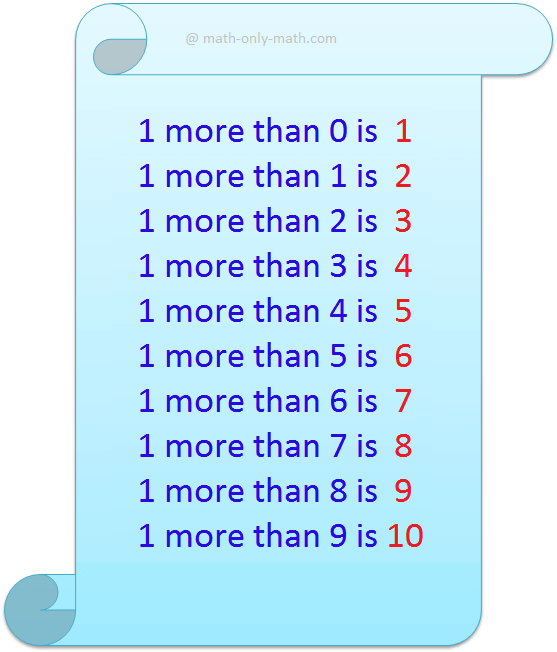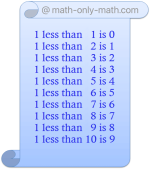Binary Multiplication
The procedure for binary multiplication is similar to that in decimal system.
The rules of binary multiplication are given by the following table:
| × | 1 | 0 |
| 1 | 1 | 0 |
| 0 | 0 | 0 |
As in decimal system, the multiplication of binary numbers is carried out by multiplying the multiplicand by one bit of the multiplier at a time and the result of the partial product for each bit is placed in such a manner that the LSB is under the corresponding multiplier bit.
Finally the partial products are added to get the complete product. The placement of the binary point in the product of two binary numbers having fractional representation is determined in the same way as in the product of decimal numbers with fractional representation. The total number of places after the binary point in the multiplicand and the multiplier is counted.
The binary point in the product is then placed before this total number of places counted from right. It should be noted that a multiplication by zero makes all the bits of the partial product zero and may thus be ignored in intermediate steps.
Also, a multiplication by 1 leaves the bits of multiplicand unchanged but shifts it towards the left by one bit position. The multiplication of binary numbers becomes more convenient by carrying out intermediate sums of partial products.
In the case of binary multiplication there are certain advantages. The multiplication is actually the addition of multiplicand with itself after some suitable shift depending upon the multiplier. Thus multiplication is actually a process of shifting and adding. This process is to be continued until the shifting due to MSB of the multiplier is done and final addition is made.
A few examples will make the process of binary multiplication clear:
Multiply:
(i) 10111 by 1101
Solution:
1 0 1 1 1
1 1 0 1
1 0 1 1 1 ← First partial product
1 0 1 1 1
1 1 1 0 0 1 1 ← First intermediate sum
1 0 1 1 1
1 0 0 1 0 1 0 1 1 ← Final sum.
Hence the required product is 100101011.
(ii) 11011.101 by 101.111
1 1 0 1 1 . 1 0 1
1 0 1 . 1 1 1
1 1 0 1 1 . 1 0 1
1 1 0 1 1 1 . 0 1 ← First partial product
1 0 1 0 0 1 0 1 1 1 ← First intermediate sum
1 1 0 1 1 1 0 1
1 1 0 0 0 0 0 1 0 1 1 ← Second intermediate sum
1 1 0 1 1 1 0 1
1 1 0 0 1 1 1 1 0 0 1 1 ← Third intermediate sum
1 1 0 1 1 1 0 1
1 0 1 0 0 0 1 0 0 1 0 0 1 1
Hence the required result is 10100010.010011.
- Decimal Number System
- Why Binary Numbers are Used
- Binary to Decimal Conversion
- Conversion of Numbers
- Hexa-decimal Number System
- Conversion of Binary Numbers to Octal or Hexa-decimal Numbers
- Octal and Hexa-Decimal Numbers
- Signed-magnitude Representation
- Radix Complement
- Diminished Radix Complement
- Arithmetic Operations of Binary Numbers
From Binary Multiplication to HOME PAGE
Didn't find what you were looking for? Or want to know more information about Math Only Math. Use this Google Search to find what you need.
Recent Articles
-
Word Problems on Multiplication and Division of Fractions | Worksheet
Apr 12, 25 03:45 AM
word problems on multiplication and division of fractions -
One More than Numbers upto 10 | Counting One More | Learn 1 more Than
Apr 11, 25 04:09 PM
1 more than means we need to add or count one more number to the given numbers. Here, we will learn counting one more than upto number 10. Examples of counting 1 more than up to number 10 are given as… -
One Less than Numbers upto 10 | Counting One Less | Learn 1 Less Than
Apr 11, 25 04:07 PM
What is one less than? 1 less than means we need to subtract or count one less number of the given numbers. Here, we will learn counting one less than upto number 10. Examples of counting 1 less than… -
Properties of Multiplication and Division of Fractions Worksheet | Ans
Apr 10, 25 03:17 PM
In properties of multiplication and division of fractions worksheet you will get different types of questions based on properties of multiplication of fractional numbers and properties of division of… -
Word Problems on Fraction | Math Fraction Word Problems |Fraction Math
Apr 09, 25 01:44 AM
In word problems on fraction we will solve different types of problems on multiplication of fractional numbers and division of fractional numbers.



New! Comments
Have your say about what you just read! Leave me a comment in the box below. Ask a Question or Answer a Question.